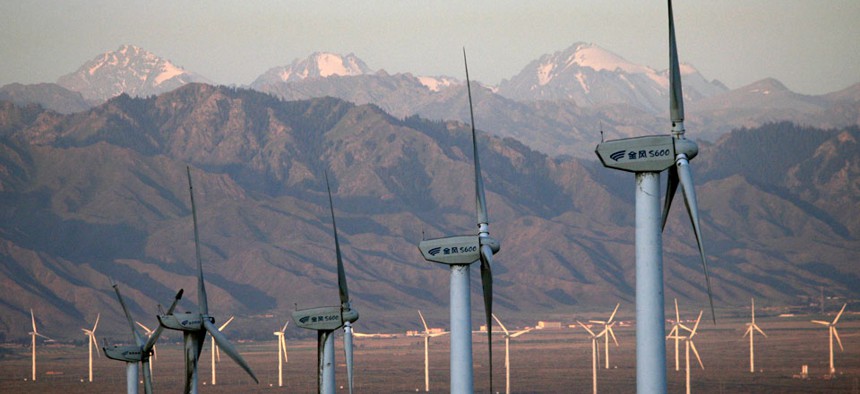Big Data Is Giving China an Edge in Renewable Energy Production

The Da Bancheng Wind Farm, south of Urumqi, in Xinjiang, China Elizabeth Dalziel/AP File Photo
IBM is deploying technology that crunches data coming from individual wind turbines.
Imagine getting a report that predicts weather conditions right outside your front door every 15 minutes. That’s happening in China, at least on wind farms where IBM is deploying technology that crunches gargantuan data flows from sensors, satellites and other sources to give granular forecasts for wind conditions at individual turbines.
As China, the US and other countries ramp up electricity production from renewable but intermittent sources like wind and solar farms, such forecasting is becoming crucial to integrating green energy into power grids. If you can forecast how windy or sunny the weather will be at a wind farm or solar power plant, you can predict how much electricity— and revenue—will be generated. And that allows utilities to avoid firing up expensive and carbon-polluting fossil fuel plants to plug the gaps in supply when a turbine farm suddenly goes slack.
“The reason that power forecasts are poor is that weather forecasts are poor,” Lloyd Treinish, chief scientist for IBM’s Deep Thunder weather forecasting project, told Quartz. “The wind coming into a wind farm is not uniform but is highly variable and if you’re looking at things only in an aggregate way that could lead to inaccurate forecasts.”





